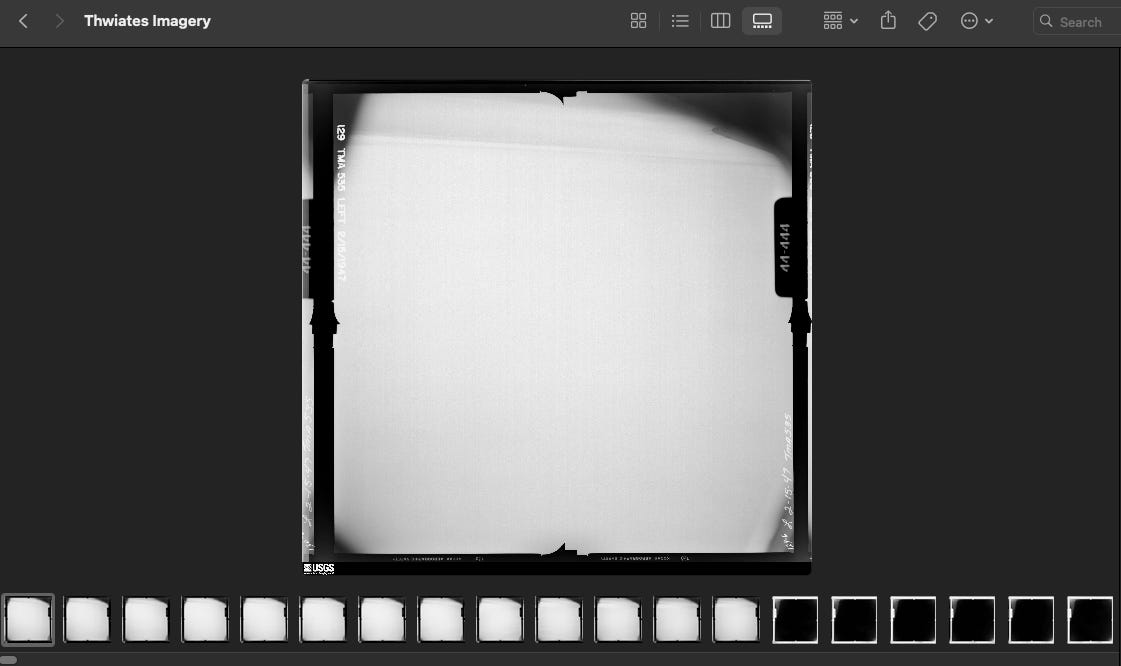First, the genocide in Gaza is ongoing. Donate to two sisters, Nour and Nagham, who founded are raising money for a mobile medical clinic.
Start this post by watching this video.
It is about four minutes long. If you feel anything as you watch it, click reply and write me back with what you felt. This post is about how it was made.
As part of Glacial Hauntologies, I downloaded every(?) film scan from the USGS Earth Explorer Archive taken on Thwaites Glacier. This is an archive of thousands of pictures, most of which are overexposed, indistinct, or blurry. They have few discernible features. It’s often difficult to tell which part of the horizon line is land and which is sky, and many of the scanned images are flipped. I can't imagine their use for science or defense. Some of them were taken for photogrammetric purposes, but there’s so little detail on the terrain (there is so little terrain?), that poor resolution and/or reconstruction seems given. Perhaps the photographer felt what I felt: an uncontainable awe, a desperate, unfulfillable need to communicate its immensity and aliveness. Alternatively (less romantically), it was freezing, and they couldn’t see what they were doing.
There is no photographer attributed to these images, just a project number and an agency and this vague description.1
In looking through the 2000+ photographs for images to glitch, I was struck by how the thumbnail rendered them in gallery mode.
The thumbnail rendering was inconsistent between rolls, the encoding giving some of the thumbnails an inverted color palette (switching the blacks with whites and vice versa). I don’t know why it’s happening and neither does the internet really, at least in cursory searches. It seems to be mac specific.
The thumbnails also increased the contrast of the photo (presumably as a result of compression), emphasizing vignettes, which themselves reminded me of sundogs. I left them in the order they were downloaded, which was not chronological, but does tend to keep scans from the same roll together. This creates moments of order and disorder, briefly telling a coherent story before abruptly switching between scenes and shadows.
I made the final video by screen capturing one thumbnail, while flipping through the images manually. Tyler added to it the “sound” of glaciers calving, audio derived from seismic recordings of the front of the Thwaites’ ice shelf. Below is the video without sound.
The result is the closest to feeling like a memory I’ve ever made.
Cheers,
Elizabeth
If you’re interested in photos of science/people, the USAP photo database has some. Click on filter → oldest-to-newest.





